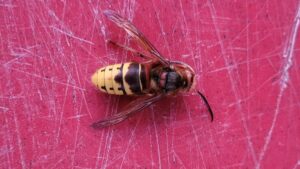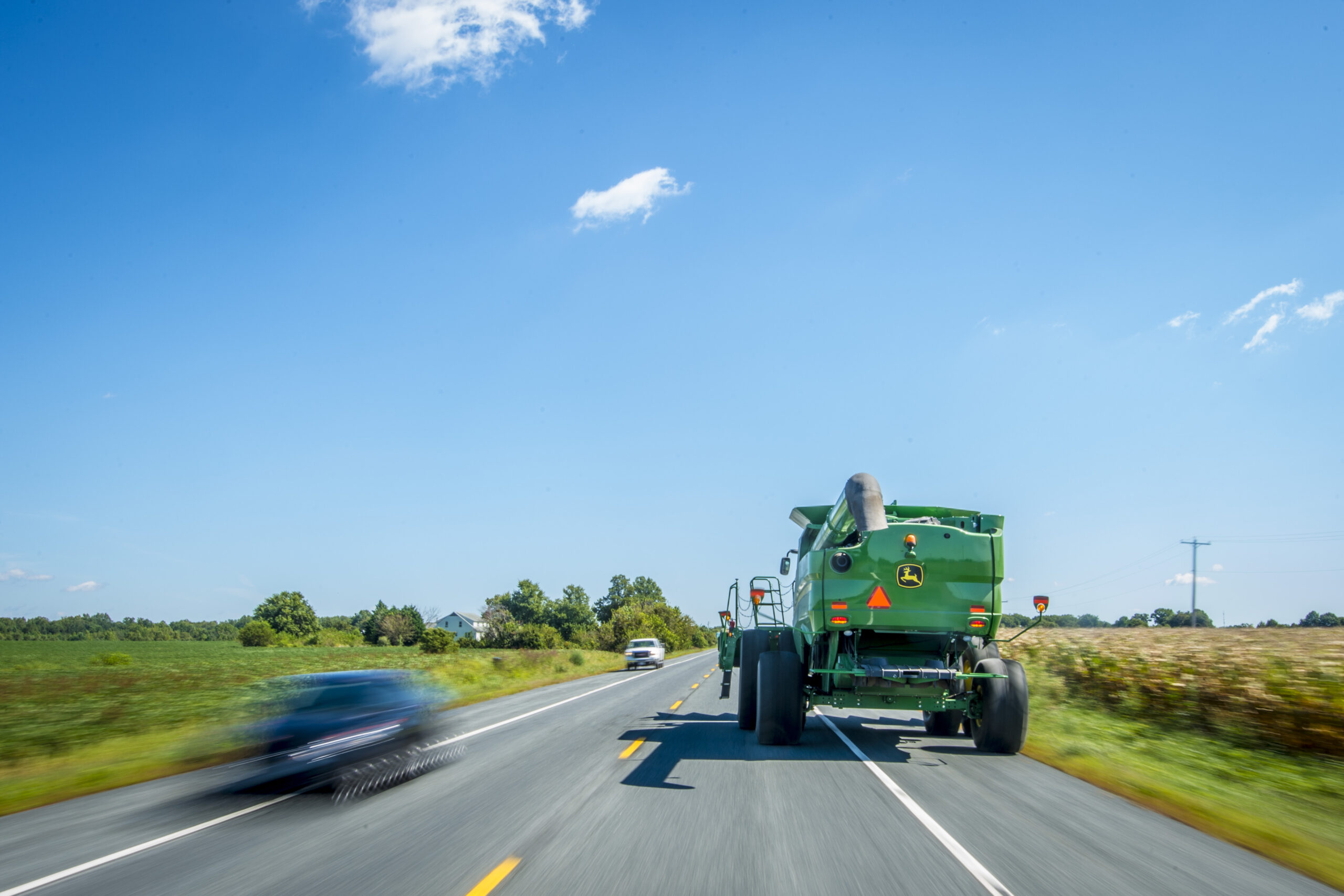
European Hornet Photo by Sal. Mangiafico
The website, Insect Identification.Org has a list of eighty seven Hymenoptera species found in New Jersey. Hymenoptera are ants, bees, wasps, and sawflies. It’s quite amazing that these species have been apart of the evolutionary record for more than 260 million years. Many are predatory species that feed on other insects. And not surprisingly at first glance, several insects have evolved camouflage to look like the stinging biting insects we learn to avoid. There are currently three theories to explain these body shapes and coloring choices. Mimicry, Masquerading, and what I would call ‘Mob Camouflage’ for lack of a better term as the authors of A Hypothesis to Explain Accuracy of Wasp Resemblances’ state.
Mimicry by less aggressive wasps and non-stinging insects like moths is known as Batesian mimicry and Müllerian mimicry. Batesian mimicry is a phenomenon observed by Sir Henry Walter Bates a British Naturalist who studied butterflies in the late 19th century. In Batesian mimicry, non-harmful species known as the mimic have evolved to model the appearance of a species whose potential predators have learned is harmful (venomous sting, biting injury, poisonous) and thus avoid consuming.
Müllerian mimicry is named after German naturalist Fritz Müller and involves two different but similar species purposefully mimicking each other’s appearances and bad taste to confuse predators.
A third hypothesis proposed in the 2016 paper ‘A Hypothesis to Explain Accuracy of Wasp Resemblances’ suggests that non-aggression by wasps towards sisters during hunting is innate and on sight and is a means to confuse or slip by the sight of the selecting agent (the bird) in a crowd.
A good example of these three adaptations on display in 2021 was the emergence of cicada broods and multiple grasshopper broods. These species are food for many Hymenoptera species and when food is abundant bee, wasp and hornet populations soar. This resulted in significant number of calls to extension offices for assistance in identifying similar patterned species. Many callers wanted to know if their hornet encounter was an asian giant hornet (Vespa mandarinia), a new introduction first found in the Pacific Northwest in 2019 that is not known to be present elsewhere in the U.S. at this time.
On another note, it remains to be seen if any of these common predatorory wasp and hornets develop a taste for spotted lanternflies. In their native range, the parasitic wasp Dryinus browni has developed a taste for lanternflies and biologists are studying the logistics of bringing this species to the U.S. The gypsy moth Ooencyrtus kuvanae introduced to the U.S. in 1908 has also been observed to prey on lanternflies.
Another surprising revelation about mimicry in wasp species, is that for some of these common North American species, both prey and predator can change their color banding from yellow and black to red and black as their range changes. Species commonly seen as yellow and black in New Jersey are red and black in Florida and most likely do so to maximize the benefits of mimicry, masquerade, and mob camouflage relative to the abundance of one particular color pattern over another in that ecological niche. As much of the work force in hand harvest agriculture migrates with the crop harvest, workers maybe familiar with the same species venomous sting but associate it with a different color pattern as seen in a different region or country.
Regardless of where in the world we are from, vertebrates like ourselves innately associate these color patterns with avoidance. In human societies, these warning stripes are incorporated into clothing and infrastructure as social cues to both protect the wearer (safety vests) and alert others to safety hazards.
General Body Color Pattens in Stinging and Non-Stinging Bees, Wasps, and Hornets
Green Body and Yellow: Three different types of sweat bees, cuckoo wasp
Red and Black: Red velvet wasp also known as ‘cow killer’ or as ‘red velvet ant’
Yellow and Black: Eastern yellow jacket hornet, southern yellow jacket hornet, common yellow jacket wasp, asian horntail, five-banded thynnid wasp, ichneumon wasp, hyperparasitic wasp, leucospid wasp, bumble bee, pigeon tremex, square head wasp, weevil wasp
Yellow and Brown: Cicada wasp, paper wasp, european hornets, long tailed ichneumon wasp
Black and White: White faced hornets, mason wasp, leaf cutter bee, potter wasp, scoliid wasp
Brown and Black: Great golden digger wasp, honey bee
Have specific questions about these species or want to learn more? Check out the research at the Department of Entomology at Rutgers https://entomology.rutgers.edu/ and faculty and research program focus at https://entomology.rutgers.edu/personnel/faculty.html or find an extension pest specialist at https://entomology.rutgers.edu/personnel/research-extension-staff.html.
Several companies have published wall posters available on the internet of common bees, wasps, and hornets that may be useful in the workplace. These visual aids would be a useful addition to worker bulletin boards in facilities processing the preferred sugar source (vegetable sugars) many of these species feed on throughout the summer.
Concerned about severe reactions to bee, wasp, ant, or hornet stings? Here is an informative article by Merk Manual https://www.merckmanuals.com/home/injuries-and-poisoning/bites-and-stings/bee,-wasp,-hornet,-and-ant-stings?redirectid=12.
The CDC has an employer fact sheet on how to reduce worker exposure to stinging members of the bee, wasp, and hornet families. https://www.cdc.gov/niosh/topics/insects/beeswasphornets.html.
Talk to your occupational health nurse about adding over the counter antihistamines like diphenhydramine, famotidine, and prescription epinephrine to your agriculture workforce first aid kit. Bee venom medical alert necklaces, bracelets and arm bands can be worn by hyper-sensitive workers in the workforce to aid in rapid response if someone is stung and unable to articulate they need medical attention.
Lastly, keep in mind that as climate changes, the seasons become longer, and temperatures are more favorable to yielding higher populations of queens and workers, the time frame to destroy nests when stinging flying insects are hybernating is also changing.


